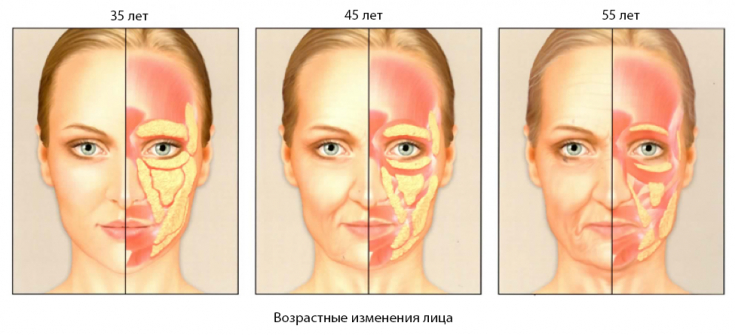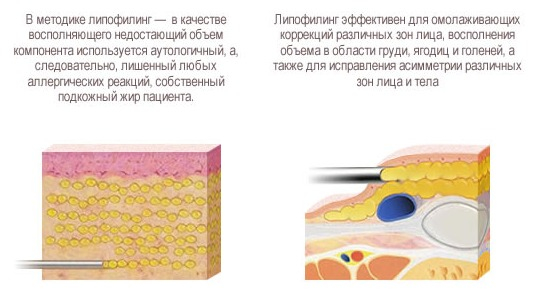Lipofilling (fat filling) and lipografting (fat grafting) − this is a correction of the oval of the face and figure by transplanting the patient's own adipose tissue from one zone to another using injections.
The essence of the manipulation is that a certain amount of the fat layer is taken from a patient from different areas with a sufficient amount of subcutaneous fat, for example, thighs or abdomen, using a special syringe.
Currently, lipofilling − a widespread and painless procedure. Read in an exclusive interview on estet-portal.com about all the subtleties and features of lipofilling from a plastic surgeon, a specialist in the field of aesthetic medicine Albert Diaspro.
Trends in facial contouring in the field of aesthetic medicine
A.D.: In fact, lipofilling − this is not a new trend. The inventor of the lipofilling technique adopted it for the treatment of patients with severe burn wounds.
Follow us on Instagram!
It should be clarified that this is not a new achievement. The most important – it is to switch, to adjust our mentality from contouring, from volume to volume and skin regeneration. Our patients and doctors must follow the principles of not only contouring, replenishment of lost volumes, but also pay attention to the quality of the skin. Since the quality of the skin also takes into account the aging of the skin and the quality of the skin – it is our business card along with our social activity.
Lipomodeling – safe alternative to injectable implants
Volumes, contour plastics, of course, are very important for the formation of the contour, the shape of the face, but only after or in tandem with the quality of the skin, because we cannot separate the quality of the skin from the restoration of volume in a complex face correction.
Lipofilling technique
A.D.: If the fat cells for lipofilling were used from the superficial subcutaneous fat, they can be moved to any area. We must be very careful when performing contouring with lipofilling to avoid the superficial location of fat cells. This is very dangerous, as the skin relief changes and subcutaneous lumpiness develops due to the distribution of fat during lipofilling, if we perform this procedure very superficially.
How to make the lipofilling procedure as effective as possible
Therefore, during lipofilling, you need to work deeply, deeply implant fat cells, and the more you need to work superficially with contouring, the more liquid fraction should be in the aspirate, so that the tissues receive regenerative stimuli due to this.
You need to be very careful: restoration of volume during contouring occurs due to fat cells, and regenerative stimuli come from stromal-vascular structures and, to some extent, from adipocyte cells.

But in the middle of the lipofilling technique is the process of engraftment of adipose tissue, which is secondary, and not engraftment to the adipose tissue of the implant, since the signal from the adipocyte secondarily enters the surrounding tissues. Therefore, we need to stop talking about engraftment of fat, because it is a tissue graft. With lipofilling, we move tissues, in particular adipose tissue, to replace those areas on the face of our patients that have lost their volume.
Key trends in modern correction of the periorbital area
Peculiarities of using the lipofilling technique
AD: I don't see a problem with using a superficial injection of a small amount of adipose tissue in patients with a full face. This can be used if the goal is not facial contouring, but skin quality improvement, skin rejuvenation.

Then lipofilling will be a trigger that starts reparative processes in the skin. If the patient has a thin face and needs volume, then I recommend using deep or medium fat implants in order to restore the contour of the face. But this concept cannot be separated, but must be used in combination for successful tissue transplantation.
The use of stem cells in lipofilling
A.D.: First of all, you need to use a technique that is validated. I use the adipose tissue lipofilling technique, which is rigorously validated in the literature. Once you have mastered the technique of using lipofilling for contouring, you will be able to use stem cells along with a fat graft. Of course, this needs to be worked on to push the aspirate to the right depth and ensure a good result.
It is important to know that with stem cells we do not create volume as with facial contouring.
Fortunately, there is no need to worry about the increase in tissue volume when injecting stem cells. Unlike a fat implant, stem cells influence the physiological and metabolic processes in our tissues. This is very important, since the use of fat implants without stem cells or with a small amount of them can lead to the fact that we can get unsatisfactory results in contouring, when replenishing lost tissue volume, as well as a lack of improvement in skin quality.
Injection technologies in cosmetology
Perspectives of using stem cells and lipofilling
AD: This is an exciting field in maxillofacial surgery, the results of which I can see on the faces of my patients every day. The lipofilling technique is also used in some areas of medicine to provide a better result compared to conventional treatment. This is because we are talking about our own fat cell, not a cell that is different.

We have a chance to really take advantage of cells that can be easily moved to another area, easy to manage, and also easy to use. This is a new era in medicine, in particular in surgery, considering reconstructive surgery. Since, aesthetic medicine – it is a broader field than just plastic and maxillofacial surgery.
Breast lipofilling: a modern way to get beautiful breasts









Add a comment